How to hide a geocache: Unterschied zwischen den Versionen
| Zeile 39: | Zeile 39: | ||
==Choose an appropriate geocache container== | ==Choose an appropriate geocache container== | ||
[[Datei:Cachebewacher 3803567287.jpg|thumb|PETling]] | |||
===The size=== | ===The size=== | ||
If you hide a real container you need to decide its size. Big containers offer space to drop and trade items. Small or tiny containers often contain only a log book but do not attract much attention. In case you already know the new location of your future geocache you need to find an appropriate size that can be hidden at that place. Most geocaches in towns range in size from ''nano'' to ''small''. In the woods such sizes would be hard to find. Out in nature you could place geocaches in size from ''normal'' to ''vary large''. Many cachers like geocaches with box containers containing a nice log book, items to trade and offering space to drop or retrieve trackables. | If you hide a real container you need to decide its size. Big containers offer space to drop and trade items. Small or tiny containers often contain only a log book but do not attract much attention. In case you already know the new location of your future geocache you need to find an appropriate size that can be hidden at that place. Most geocaches in towns range in size from ''nano'' to ''small''. In the woods such sizes would be hard to find. Out in nature you could place geocaches in size from ''normal'' to ''vary large''. Many cachers like geocaches with box containers containing a nice log book, items to trade and offering space to drop or retrieve trackables. | ||
Version vom 16. Juli 2015, 16:54 Uhr
This is a translation of Wie verstecke ich einen Cache?. Please insert only links to (existing or to-be-written) English language Wiki pages here. In diesem Artikel bitte nur Links auf englischsprachige Seiten verwenden.
Translation in progress
The perfect moment for your first own geocache
Actually there is no perfect moment for your first own geocache. Cachers do not even need to hide an own geocache. But most people want to give something back to the community. It is very useful to gain as much experience in seeking geocaches as possible. It is the best way to see how and where others hide geocaches and how the containers or listings look like. It is also interesting to read the logs of the geocaches you found. High quality geocaches often get long log entries and many recommendation stars. If you did like the geocache and others too, than that might be the kind of quality cache we all like. Try to create a geocache that could also be fun so find.
Know your responsibility
Your first geocache could be an exciting experience. However you should keep in mind that by hiding a geocache you are taking over responsibilities. Those who hide a geocache become owners. As an owner you are responsible for maintaining your geocache(s) and taking care of any issues that may arise. You can find the terms for hiding a geocache and publishing it at the Opencaching website.
Choose a geocache type
Think about what type of geocache you would like to create. There are geocaches with and without a hidden container.
Geocaches with a container:
- The easiest geocache is a so called traditional geocache indicated with a
 treasure chest. If a traditional geocache is in the vicinity of a parking area it is called a
treasure chest. If a traditional geocache is in the vicinity of a parking area it is called a  Drive-In a.k.a. "drive-by" or "park 'n grab".
Drive-In a.k.a. "drive-by" or "park 'n grab". - A geocache that first requires to solve a puzzle or a sophisticated math or physics problem is called a
 quiz geocache a.k.a. mystery geocache and
quiz geocache a.k.a. mystery geocache and  math or physics geocache.
math or physics geocache. - A geocache consisting of more then one station where you need to find stages to reach the final location is called a
 multicache.
multicache. - And finally there are
 moving geocaches - if not attached to a vihicle they could also have a container.
moving geocaches - if not attached to a vihicle they could also have a container.
Geocaches without a container:
 Virtual geocaches and
Virtual geocaches and  webcam geocaches usually do not require to find a stash.
webcam geocaches usually do not require to find a stash.
You should decide the type of geocache first because it has influence on the need of one or more hiding places or none.
Find a good hiding place
If you want to hide a geocache with a container you need to find a good hiding place. Hiding a boring container at a boring place is probably not the best idea. Other people had already that idea. ;-) So it is good to know some handy criterias. Ask yourself if you would like to go to the geocache's location.
- Is there something interesting to see? (nature, a view, cultural heritage, a monument or a special bulding)
- Is the geocache itself somehow funny or fancy?
- Is there some challenge to find the geocache?
- Is the geocache a special experience for cachers?
Next you need to find a good hiding place at the location. Often there are a gazillion possibilities to hide something. But always keep restricting criterias in your mind:
- Is the location overcrowded and cachers would permanently be disturbed?
- Is there a high risk that the geocache could be found by muggles and get lost?
- Is it permitted to hide the geocache at your desired location?
- Is the location appropriate for the additional people (cachers and maybe vehicles) that your geocache would attract?
It is also important to an owner to have easy access to the geocache. As an owner you are responsible for maintaining your geocache and taking care of any issues that may arise as long as your geocache is active.
Choose an appropriate geocache container
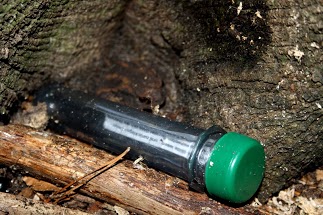
The size
If you hide a real container you need to decide its size. Big containers offer space to drop and trade items. Small or tiny containers often contain only a log book but do not attract much attention. In case you already know the new location of your future geocache you need to find an appropriate size that can be hidden at that place. Most geocaches in towns range in size from nano to small. In the woods such sizes would be hard to find. Out in nature you could place geocaches in size from normal to vary large. Many cachers like geocaches with box containers containing a nice log book, items to trade and offering space to drop or retrieve trackables.
The container
Outdoors a container should have an appropriate durability. Typical containers in size micro are film canisters and PET bottle preforms (in Germany called "PETlinge"). Film canisters are cheap or free but not 100% waterproof. PET bottle preforms have a bottle cap and are 100 % waterproof but are only available at specialised shops. You could also use plastic containers for pharmaceutical products or cosmetics.
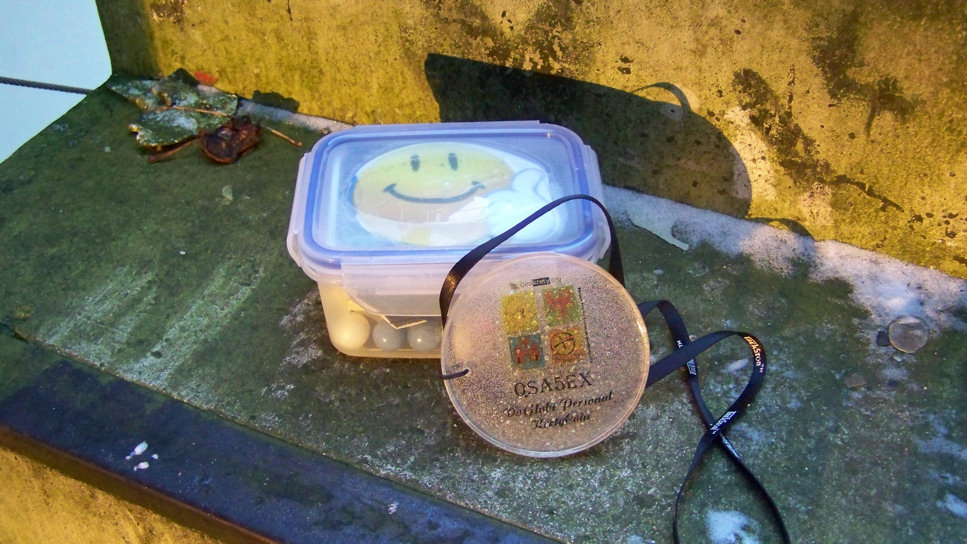
Well-proven containers in size small and normal are so called Lock&Lock boxes. You can also find cheaper products with a similar system. These boxes are waterproof and easy to open and close. The content is well protected. You should not buy the most expensive boxes since there is always the possibility that a geocache container gets lost or destroyed.
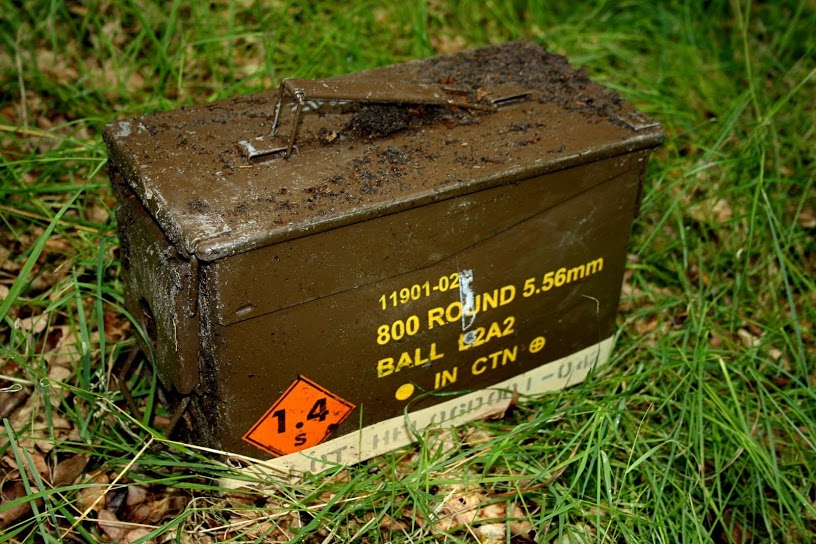
Sometimes ammunition boxes are used as container for sizes from normal to very large but keep in mind to label such a box as geocache. Otherwise a muggle could report it to the authorities. Ammunition boxes are not cheap but waterproof and offer much space. Containers in size large and very large could also be waterproof boxes or containers for water sports.
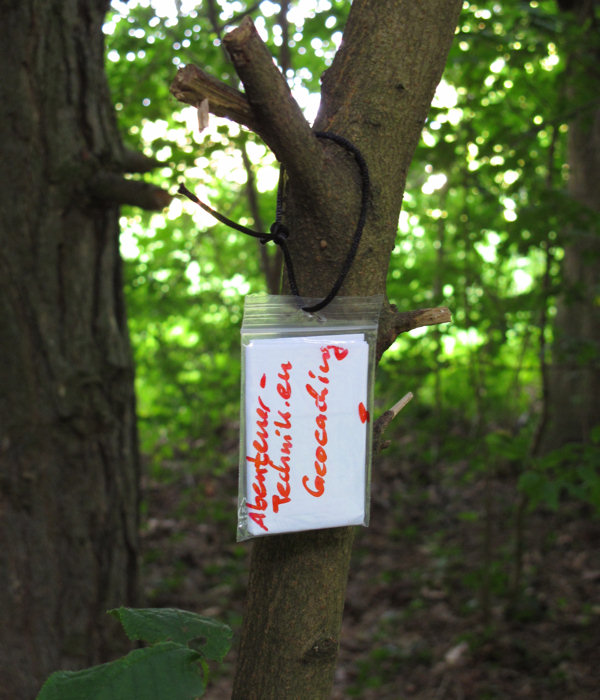
You should not use:
- plastic bag as container or to protect a non-waterproof container. Plastic bags break down quickly and end as trash in the nature.
- Coffee tins or cookie jars because they rust quickly and are hard to open.
- Glass jars because their lids rust quickly and the glass can shatter.
Things you should put in your geocache
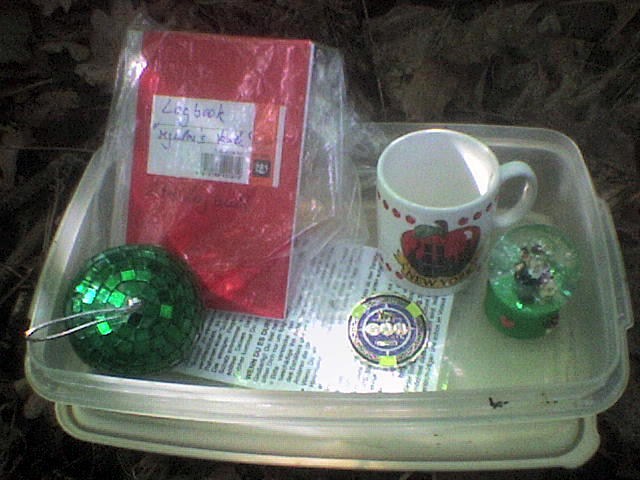
- A geocache with a container always contains a log book and if possible a pen - preferably a pencil. Pencils write even when wet or at low temperatures.
- Clearly label your container with a stash note so that any finder can quickly identify it as a geocache and as being harmless. The label should give the owners email address or an other contact method. It is useful to include information how to log the find.
- You can place items to trade or trackables in containers with enough space.
Things you should never put in a geocache
- perishable items like food
- things that smell like food (could attract animals)
- sample packages of cosmetics (could leak and ruin the geocache's content)
- air freshener or perfumed candles (would transfer the smell to the geocache's content)
- any illegal or dangerous contents like explosives, ammunition, weapons or items inappropriate for minors
- alcohol
- advertisement items
- drugs
Hide the container
After finishing all preparation steps you can hide the container. A geocache needs to be protected from being discovered by muggles. You could disguise it with material in the vicinity of the geocache like branches, stones or leafs.
Common hiding places are hollow stumps, a large network of roots of old trees, natural depressions, hollow crutches or piles of stones. But there are much more sophisticated possibilities. By seeking many geocaches before you hide your first geocache you will get familiar with that.
Don'ts: Do never put screws or nails in living trees.
Determine the coordinates
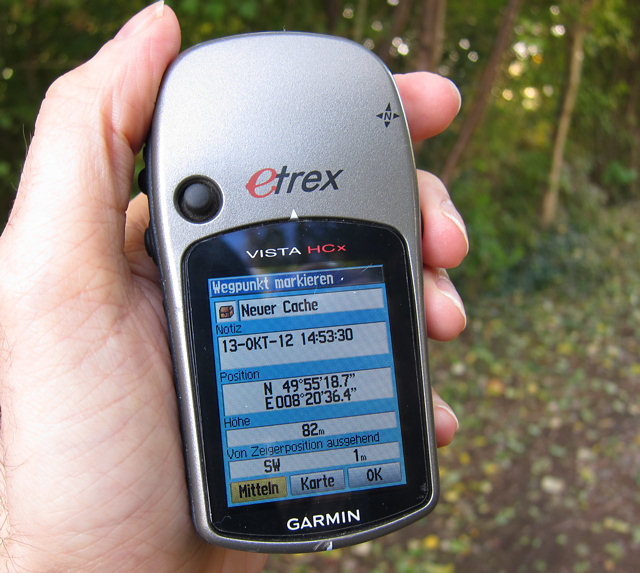
GPS receiver are most precise in determining the GPS coordinates of your geocache. Smartphone often are less accurate.
If you just hit the waypoint button on your receiver to save your location you could get unsatisfying data. To find a geocache you need as accurate data as possible. If you are under clear sky just saving your position might be enough. Modern GPS chipsets do a lot of calculations and filtering before displaying a position. But if you are in the woods with dense trees or between several buildings it is beneficial to use a function that is called waypoint averaging. Check the manual of your GPS receiver how to do that.
Just put the receiver on your geocache and hit the function, wait five minutes and then save the waypoint. You could also hold the receiver, activate the function, stretched your arm in front of you and turn slowly and several times on the hiding place. The GPS receiver will measure the position dozens of times and average it.
The resulting coordinates are the values you need to enter into the "Submit a new cache" form. If there is a parking area nearby you could save another waypoint (no avaraging necessary) and add that information to your geocache listing.
Der Testlauf
Wenn du dich für einen Multi- oder Rätstelcache entschieden hast, ist es durchaus sinnvoll, nach dem Verstecken und dem Messen der Koordinaten einen so genannten Betatest machen zu lassen. Und dabei ist es vollkommen egal, ob du deinen ersten Cache versteckst oder bereits 20 Caches versteckt hast. Dieser Test soll sicher stellen, dass das, was du dir ausgedacht hast, so auch funktioniert. Dass z. B. das Rätsel lösbar ist, und dass als Ergebnis auch wirklich die richtige Koordinate herauskommt. Ober bei einem Multicache, dass alle Koordinaten an den richtigen Stellen versteckt sind (häufig vorkommender Flüchtigkeitsfehler: Koordinate der zu suchenden Dose ist in DER Dose drin) und vor allem, dass auch alle Verstecke gefunden werden können.
Ganz ohne es zu wollen und auch zu merken, schleichen sich bei komplexeren Geocaches schnell Fehlerchen wie Zahlendreher in den Koordinaten o.ä. ein. Da ist es sehr vorteilhaft, wenn das vor der Veröffentlichung jemandem auffällt und man diese Fehler noch ausmerzen kann, bevor der FTF-Jäger daran scheitert. Hierbei ist es auch durchaus von Vorteil, wenn den Betatest nicht die besten Freunde machen (weil die wissen, wie man „tickt“ und ihnen ein Fehler dann evtl. auch nicht auffällt), sonder evtl. sogar ganz fremde Cacher (aus der Homezone). Ein Betatest ist für viele eine große Ehre; daher wird wohl kaum jemand nein sagen, wenn er per Mail gefragt wird, ob er Lust hat, einen ganz neuen Geocache testen.
Und nun?
Herzlichen Glückwunsch, du hast Deinen ersten Geocache versteckt. Jetzt geht es nach Haus um das Listing zu schreiben.